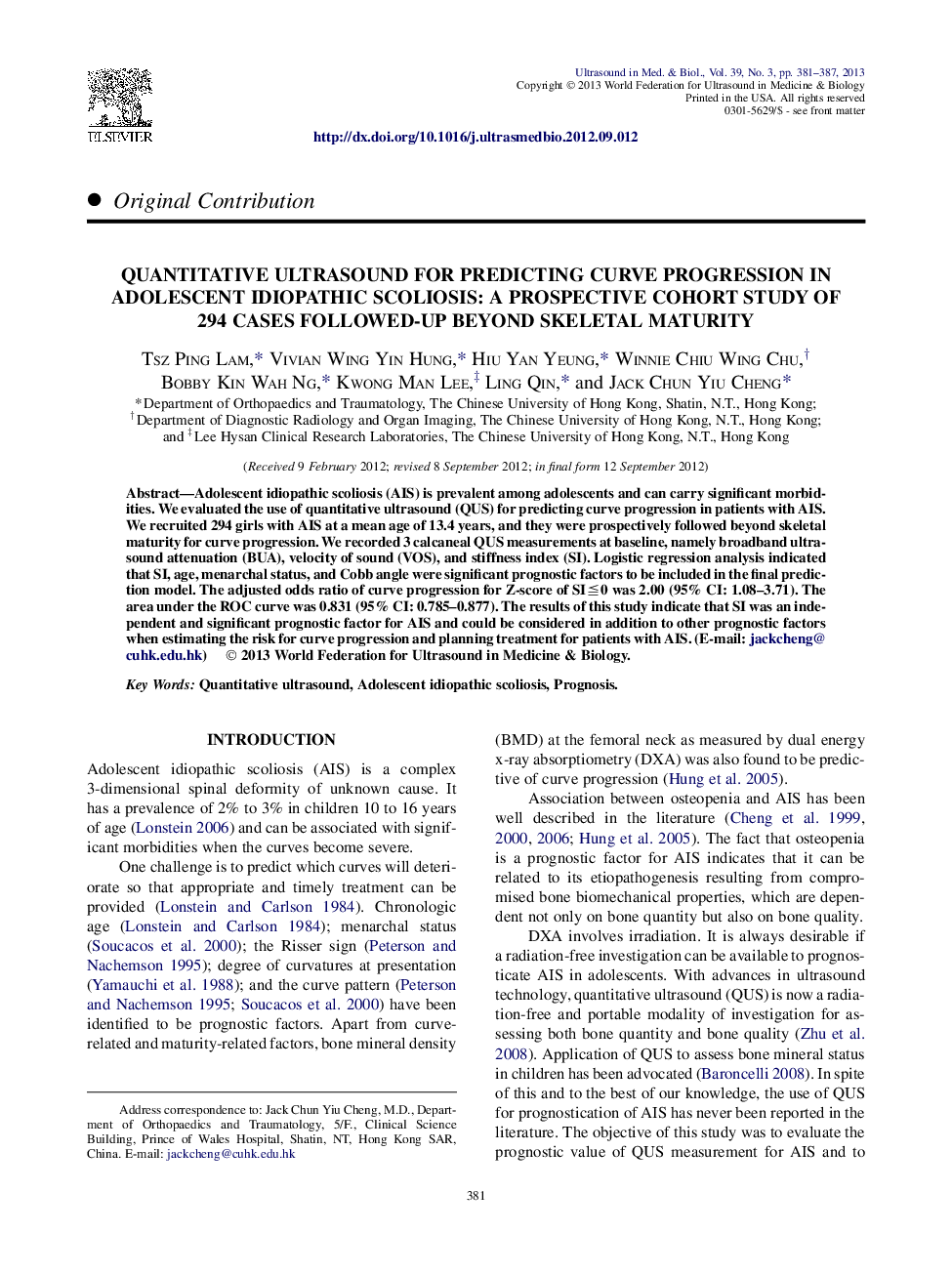| Article ID | Journal | Published Year | Pages | File Type |
|---|---|---|---|---|
| 1761276 | Ultrasound in Medicine & Biology | 2013 | 7 Pages |
Abstract
Adolescent idiopathic scoliosis (AIS) is prevalent among adolescents and can carry significant morbidities. We evaluated the use of quantitative ultrasound (QUS) for predicting curve progression in patients with AIS. We recruited 294 girls with AIS at a mean age of 13.4 years, and they were prospectively followed beyond skeletal maturity for curve progression. We recorded 3 calcaneal QUS measurements at baseline, namely broadband ultrasound attenuation (BUA), velocity of sound (VOS), and stiffness index (SI). Logistic regression analysis indicated that SI, age, menarchal status, and Cobb angle were significant prognostic factors to be included in the final prediction model. The adjusted odds ratio of curve progression for Z-score of SIâ¦0 was 2.00 (95% CI: 1.08-3.71). The area under the ROC curve was 0.831 (95% CI: 0.785-0.877). The results of this study indicate that SI was an independent and significant prognostic factor for AIS and could be considered in addition to other prognostic factors when estimating the risk for curve progression and planning treatment for patients with AIS.
Related Topics
Physical Sciences and Engineering
Physics and Astronomy
Acoustics and Ultrasonics
Authors
Tsz Ping Lam, Vivian Wing Yin Hung, Hiu Yan Yeung, Winnie Chiu Wing Chu, Bobby Kin Wah Ng, Kwong Man Lee, Ling Qin, Jack Chun Yiu Cheng,
